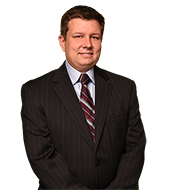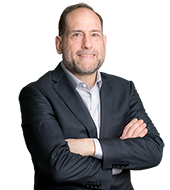USPTO Clarifies Alice/Mayo Step 2A With New Patent Subject-Matter Eligibility Guidance
For the last several years, a major part of prosecuting software-related patents at the U.S. Patent and Trademark Office (“USPTO”) has been dealing with the USPTO’s inconsistent interpretation of patent subject-matter eligibility issues under 35 U.S.C. § 101 arising from the Supreme Court’s decisions in Alice Corporation Proprietary Ltd. v. CLS Bank International[1] and Mayo Collaborative Services v. Prometheus Labs.[2] However, new guidance from the USPTO concerning the Alice/Mayo test regarding patent subject-matter eligibility was released for public comment on January 7, 2019. This guidance attempts to provide more examination consistency for entities prosecuting software-related patents. We describe the primary features of the new guidance below and offer insights into what this means for companies pursuing such patents at the USPTO going forward.
In recognizing patent applicants’ ongoing frustration related to subject-matter eligibility rejections, the USPTO stated that “properly applying the Alice/Mayo test in a consistent manner has proven to be difficult, and has caused uncertainty in this area of the law,” such that “it has become difficult in some cases for inventors, businesses, and other patent stakeholders to reliably and predictably determine what subject matter is patent eligible.”[3] The current USPTO procedure is to determine if a claim is “directed to” a judicial exception to patentable subject matter, such as “abstract ideas,” and then, if the claim is directed to such a judicial exception, to determine if the claim has “something more” than the judicial exception that would make the claim patent eligible, despite its being “directed to” a judicial exception. To clarify its application of the Alice/Mayo test, the USPTO revised the examining procedure for Step 2A of the test, which determines whether a claim is “directed to” a judicial exception. Based on the new guidance, it appears that the USPTO is aiming to cut down on subject-matter eligibility rejections.[4]
The USPTO made two significant changes to the Alice/Mayo test. First, under a newly termed “Prong 1” of Step 2A, examiners are instructed to determine whether the claimed subject matter recites a judicial exception, such as an abstract idea. The USPTO defined an abstract idea as one of three categories: (1) mathematical concepts, (2) certain methods of organizing human activity, and (3) mental processes. As specified in the new guidance, mathematical concepts include mathematical relationships, formulas, equations, or calculations. Methods of organizing human activity include fundamental economic principles or practices, commercial or legal interactions, or managing personal behavior or relationships or interactions between people. Mental processes include concepts performed in the human mind, including an observation, evaluation, judgment, or opinion. Examiners no longer have to compare the claims to past case law to determine whether an abstract idea is recited, as is currently provided in Manual of Patent Examining Procedure (“MPEP”) 2106.[5]
Under the new guidance, claims that do not recite subject matter within one of the three defined categories should not be deemed as covering an abstract idea, with only rare exceptions. The USPTO’s guidance explains that, in the rare circumstance in which an examiner believes a claim limitation should be treated as an abstract idea even though it does not fall within the defined categories, the examiner must still go through the rest of the examination steps Step 2A and Step 2B, and if grounds for rejection still remain, must provide justification for his or her abstract idea determination that the Technology Center Director must approve. Such justification could include, for example, that the claim contains subject matter that invokes similar eligibility concerns to those the Supreme Court has expressed in regard to judicial exceptions.
The second significant change of the new guidance sets forth a new “Prong 2” of Step 2A. Under the new Prong 2, the guidance adds an entirely new subject-matter eligibility test related to whether a claim recites a practical application of a judicial exception. The USPTO’s revised guidance explains that a claim is not “directed to” a judicial exception (i.e., the claim is not abstract) if the claim recites additional elements that, when taken as a whole, integrate the judicial exception into a practical application of the judicial exception. The guidance further explains that “[a] claim that integrates a judicial exception into a practical application will apply, rely on, or use the judicial exception in a manner that imposes a meaningful limit on the judicial exception, such that the claim is more than a drafting effort designed to monopolize the judicial exception.”[6]
The new guidance provides some general direction as to what is meant by a practical application. The examples provided by the guidance include claims that:
- Reflect an improvement in the functioning of a computer or an improvement to other technology or technical field;
- Apply or use a judicial exception to effect a particular treatment or prophylaxis for a disease or medical condition;
- Implement a judicial exception with, or uses a judicial exception in conjunction with, a particular machine or manufacture that is integral to the claim;
- Effect a transformation or reduction of a particular article to a different state or thing; or
- Use a judicial exception in some meaningful way beyond generally linking the use of the judicial exception to a particular technological environment, such that the claim as a whole is more than a drafting effort designed to monopolize the exception.[7]
The new guidance indicates a judicial exception should be found to not be integrated into a practical application if an additional claim element:
- Merely recites the words “apply it” with the judicial exception, merely includes instructions to implement an abstract idea on a computer, or merely uses a computer as a tool to perform an abstract idea;
- Adds insignificant extra-solution activity to the judicial exception; or
- Does no more than generally link the use of a judicial exception to a particular technological environment or field of use.[8]
Importantly, in a significant change, the USPTO’s new guidance also noted that Step 2A of the Alice/Mayo test “specifically excludes consideration of whether the additional elements represent well-understood, routine, conventional activity.”[9] Examiners are instructed to give weight to all additional claim elements, without any consideration as to whether the claim elements are directed to conventional elements. If the examiner determines that the claim is not directed to a practical application, current Step 2B is performed regarding whether the claim elements represent well-understood, routine, conventional activity.
Going forward, the new guidance should make it more difficult for examiners to sustain abstract idea rejections against many inventions, including software-related inventions. The new guidance swings the examination pendulum back toward the original machine or transformation test [10] while significantly increasing the burden on examiners to make a proper abstract idea rejection. In particular, to make an abstract idea rejection under the new guidance, examiners will have to articulate why an invention does not constitute a practical application under Prong 2 of Step 2A and then provide evidence under Step 2B regarding why claim elements recite well-understood, routine, conventional activity. [11]
The USPTO’s revised guidance is open for public comment until March 8, 2019, and is subject to change. In addition, since the guidance is not binding as law, it remains to be seen how courts will assess the validity of patents granted in accordance with the USPTO’s new subject-matter eligibility guidelines. K&L Gates will continue to monitor subject-matter eligibility criteria and provide updates regarding any new developments.
Notes:
[1] Alice Corp. Pty. Ltd. v. CLS Bank Int’l, 573 U.S. _, 134 S. Ct. 2347, 2354, 110 USPQ2d 1976, 1980 (2014).
[2] Mayo Collaborative Servs. v. Prometheus Labs., Inc., 566 U.S. 66, 71, 101 USPQ2d 1961, 1965 (2012).
[3] 2019 Revised Patent Subject Matter Eligibility Guidance, 84 Fed. Reg. 50 (Jan. 7, 2019).
[4] Id. at 51 (explaining that “any claim considered patent eligible under prior guidance should be considered patent eligible under this guidance”)
[5] MPEP 9th Edition, Revision 08.2017, Section 2106.04(a), USPTO, https://www.uspto.gov/web/offices/pac/mpep/index.html (“Examiners should determine whether a claim recites an abstract idea by (1) identifying the claimed concept . . . and (2) comparing the claimed concept to the concepts previously identified as abstract ideas by the courts to determine if it is similar.”).
[6] Id. at 53
[7] Id. at 55
[8] Id.
[9] Id.
[10] Bilski v. Kappos, 561 U.S. 593, 598 (2010) (explaining the machine-or-transformation test requires that a process be tied to a machine that transforms an article in order to be patent eligible).
[11] Memorandum from Deputy Commissioner for Patent Examination Policy Robert W. Bahr to Patent Examining Corps, Changes in Examination Procedure Pertaining to Subject Matter Eligibility, Recent Subject Matter Eligibility Decision (Berkheimer v. HP, Inc.) (Apr. 19, 2018), https://www.uspto.gov/sites/default/files/documents/memo-berkheimer-20180419.pdf.
This publication/newsletter is for informational purposes and does not contain or convey legal advice. The information herein should not be used or relied upon in regard to any particular facts or circumstances without first consulting a lawyer. Any views expressed herein are those of the author(s) and not necessarily those of the law firm's clients.






